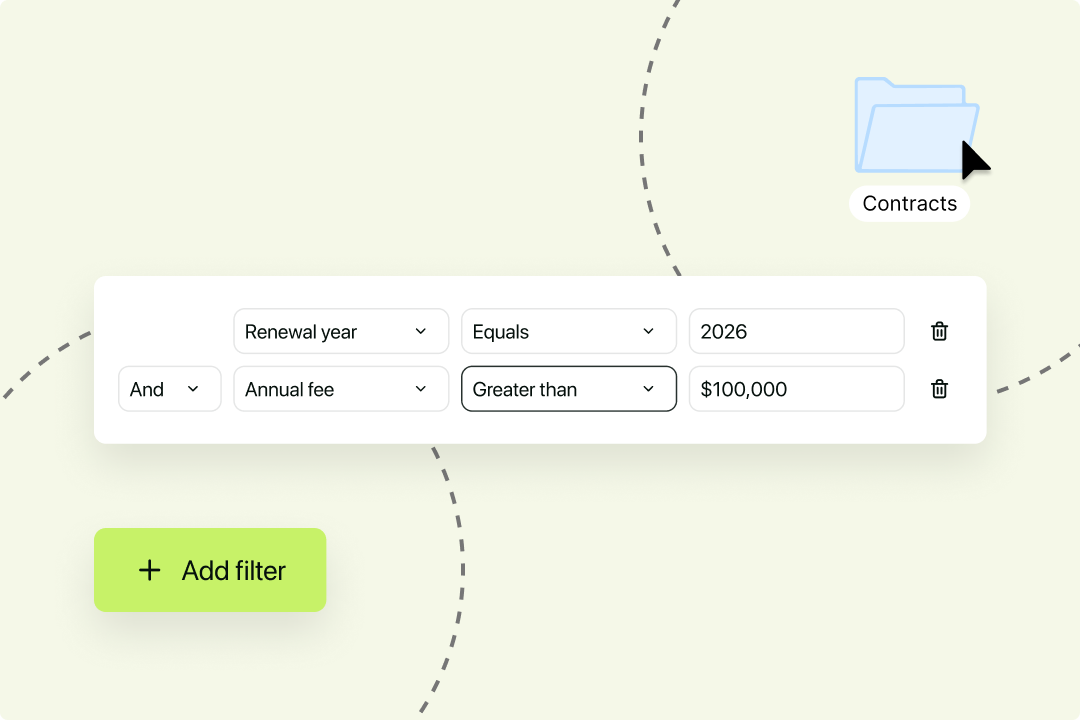Solutions
Customer Support
Resources
Sales teams are always looking at ways to increase their velocity and gain more revenue for the company.
One way to do this is by increasing your average deal size, which can be done in several ways. This article looks at what average deal size (ADS) is, why it's an important metric for your sales team and how you can increase your average deal size.
Average deal size, also known as average contract value (ACV), is the average amount of money a business accrues per deal it closes. It can be calculated by adding together the total revenue achieved in a set amount of time (for example., per month, quarter or year) divided by the number of closed deals within that time.
It is arguably one of the most important metrics for sales teams, especially in SaaS or software companies. In fact, Patrick Blair, Executive Vice President at software giant Salesforce, says: “At Salesforce, our most important sales metric is annualized contractual value, or ACV.”
You can track the ACV of new business but you can also include existing business and calculate your ‘total’ average deal size. How you choose to calculate your ACV depends on what works best for your business and your goals.

There are so many factors that impact your average deal size, starting with the price of the product or service. Sales leaders need to consider the value the product has for the user, as opposed to basing cost just on the features of your product. Price will vary per user depending on their particular use case.
Some of the most common factors that impact ACV are:
Increasing this number may seem fairly simple on paper, however, it is much harder to put these strategies into practice. It’s important to not increase your price just for the sake of it, people will see through this.
For example, you may think that increasing the price of a particular aspect of your product will increase your ACV fast. However, if you were to do this for your implementation fee, you could end up putting prospects off your product, as one Gartner study noted that customers value low set-up costs.
So how can you increase average deal size without compromising the customer experience? We asked the experts.
There are so many ways you can increase your ACV, so we’ve looked into the top 6.
Ensuring you have high-quality leads starts the sales journey off right and ensures you’re targeting leads that have the correct budget for your product.
Some people may use lead scoring to do this. Lead scoring means assigning a point value to each prospect early in the sales pipeline to decide how much time to invest in the prospect. This increases your ACV as it ensures that the right people are coming into your pipeline.
It can also mean disqualifying leads that have different expectations of the product and its cost. These prospects decrease the amount of time sales reps have to follow up with leads that meet your target average deal size.
Setting up a solid qualification process is key here. Your sales team need to be clear on what an ideal prospect looks like for you. This could be achieved by:
This process can be done by a dedicated team member or be part of the process as prospects enter the funnel.

In some cases, discounts may be essential to help bring a deal to a close and get a contract signed. However, being fast and loose about discounts rather than thinking strategically may reduce your average deal size.
In fact, according to a study by Paddle, heavy discounting can cause SaaS lifetime value (LTV) to drop by 30 per cent. This is primarily because it lowers the customer's perceived value of the product, making them less willing to pay higher costs in the future and more likely to churn when contract renewals come around.
This is not to say that discounting is dead or even that it’s not useful, but rather that the decision to discount has to be made in a data-led, strategic way. Setting up an approver, - usually the Chief Revenue Officer or Sales Team Lead - is essential here. This way you have somebody dedicated to figuring out the type of customers that need a deal to get them to sign, and only target them with particular discounts.
Discounts should also be approved based on their longevity. For example, no discount should last beyond the duration of a contract, as its purpose is to lower the energy required for someone to convert. Your product should be able to justify the full value of the actual price, not the discounted rate.
Ensuring that discounts go through an appropriate approval process is key to increasing your ACV and longer-term revenue.
The length of the deal or subscription length is a determining factor in your ADS. Increasing the duration of your deal secures revenue over a longer period, increasing the value of that particular contract.
Some companies choose to design their SaaS pricing strategy to encourage a longer subscription period, even if it means offering a discount. You will increase your contract value and also the time the customer spends investing in your product, and this means building up a greater rapport when it comes to renewal season.

The most important thing to note here is ‘based on the user's needs’. Upselling customers is a sales tactic as old as time, but if you’re doing this without reasonable grounds could even put customers off buying your product.
According to research by HubSpot, 88 per cent of surveyed salespeople try to upsell their customers, making it a popular practice. The best practice for this is identifying exactly what it is that your customer needs in order to discover if an upsell could work.
For example, if you’re selling a sales automation platform to a startup that has just secured new funding and is about to scale, it may be the case that the plan that suits them at their current stage would quickly be outdated. So, a sales rep would be able to explain the relevant features of the next available plan that offers that the lower-tier option doesn't and is better suited to the company as and when it grows.
Creating personas for your customers to understand their goals and their challenges will help you to identify the most helpful, relevant use of your product for them. Your upsell needs to add tangible value for your prospects. When done correctly, upselling can increase your average deal size by a sizable margin.
Multithreading is the process of developing relationships with multiple decision-makers on the purchasing side. Put simply, multi-threaded sales are deals that have more than one stakeholder engaged in a sales process.
Usually, this means a more informed sales process, with multiple tailored demos for different personas needed to seal the deal. That said, it's an extremely powerful tool that can increase ACV in a number of ways:
Finally, you can’t manage what you don’t measure. Tracking and monitoring your ACV will hold you accountable for it and increase transparency within your sales team.
This means investing in calculating what your ACV target is every month and visibly tracking this. This could be done in a spreadsheet and shared in a weekly or monthly meeting to keep the whole team informed on where you want this metric to be.
Tracking ACV is also important to help you review and reevaluate if you’ve calculated it correctly. For example, if your business has set your ACV too high this target will consistently not be met despite MRR and ARR being on track. This would suggest that a lower average deal size suits your customer base better and you should focus on increasing customer numbers.
A subscription base like Netflix is a great example of this. For instance, say Netflix costs you $8.99 a month and you’re locked in for a year, the ACV of this is only $107.88, yet Netflix’s annual gross profit for 2022 was $12.447 billion. In short, your ACV should be suited to your business and tracking will ensure that this is the case.

Increasing your average deal size is an important and necessary step towards increasing your sales team's success, but this would be impossible without contracts.
Empower your reps to create contracts without leaving your CRM and remove legal admin so you can keep the focus on closing deals faster. Book a demo with Juro to see how you can use one platform for all your contracts below.
Lorem ipsum dolor sit amet, consectetur adipiscing elit. Suspendisse varius enim in eros elementum tristique. Duis cursus, mi quis viverra ornare, eros dolor interdum nulla, ut commodo diam libero vitae erat. Aenean faucibus nibh et justo cursus id rutrum lorem imperdiet. Nunc ut sem vitae risus tristique posuere.

